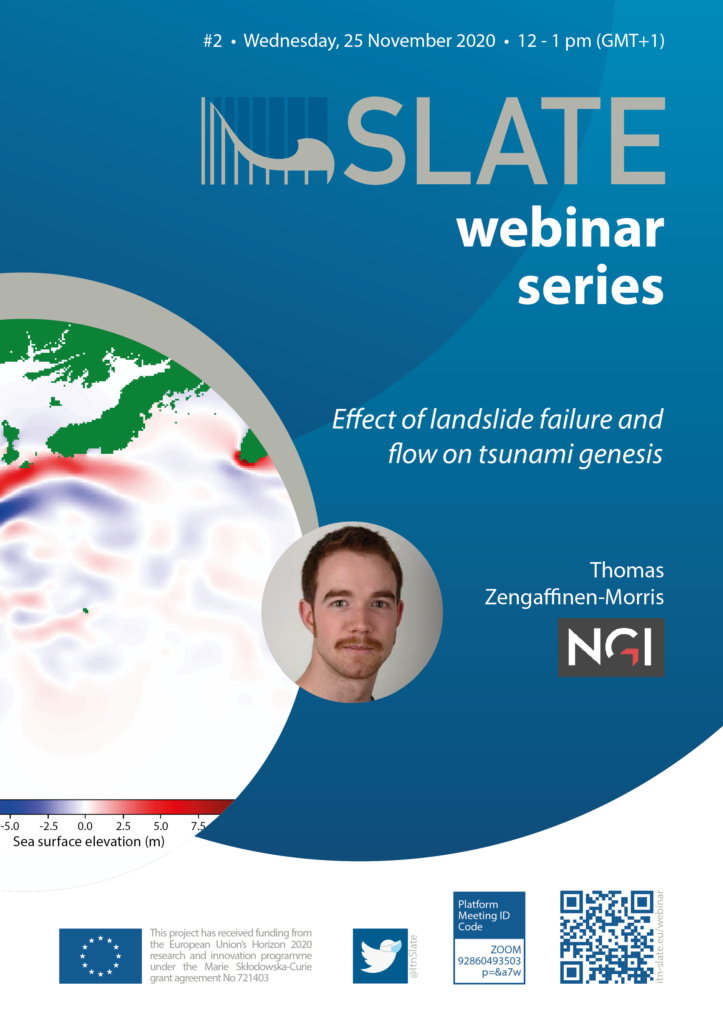
Submarine mass movements are important sources for tsunamis with potential destructive consequences at coastlines. A famous example from historical records is, for instance, the 1929 Grand Banks tsunami in Canada. This tsunami of several meters’ height hit, among other coasts, the south coast of Newfoundland. The event resulted in fatalities and destroyed homes. Our project aims to relate the properties of submarine mass movements to tsunami genesis. Thereby, we apply a numerical landslide model that treats the mass movement as a deformable fluid. The main research finding is that the tsunami genesis is sensitive to, among other parameters, the initial yield strength of the mass. The lower the initial yield strength, the larger the velocity and acceleration, which induces a larger maximum tsunami height. Our research is important, because a better understanding of the physical processes that drive the tsunami genesis can bring prognostic tsunami modelling a step forward.
- Wednesday, 25 November 2020
- 12 pm – 1 pm (GMT+1)
- via ZOOM
- permanent Zoom Link
- ID: 928 6049 3503
Code: p=&a7w
Webinar Flyer:


